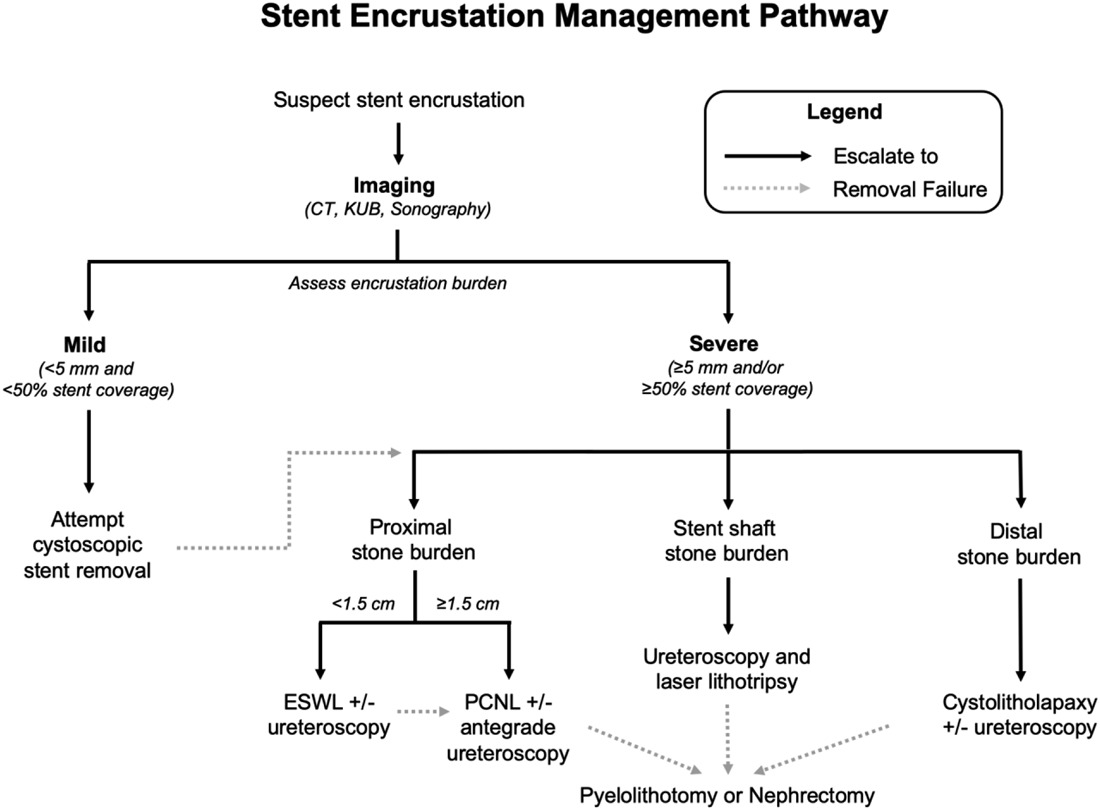Upper Tract Drainage: Stents and PCNs
Nephrostomy tubes (PCNs) and percutaneous access
- Indications: bypass obstruction, diagnostic studies, instill chemotherapy, postsurgical drainage
- Percutaneous access: safest via papillary approach due to lack of vessels, although some evidence that infundibular approach has no increased bleeding risk
- Anticoagulation: need to stop prior to access, although aspirin use does not seem to increase bleeding risk
- Ribs: entry above 11th rib has high risk for pleural injury, entry above 10th rib has high risk for lung injury
- Blind access: access via Grynfeltt lumbar triangle - borders are 12th rib, quadratus lumborus, transversus abdominis, and internal oblique, insert needle 3-4cm at 30degree cephalad angle
- Nephroureteral stent: consider if concern that tube will become dislodged with movement
- Options: cope loop (pigtail secured with string), council catheter placed over wire, Malecot catheter placed with straightener, or nephroureteral stent
- Complications: acute bleeding requiring transfusion (0.5-4%), delayed hemorrhage (< 1%), perforation, colon injury (0.1%), splenic/hepatic injury (less rare if access is above 10th rib), hydrothorax/pneumothorax (rare if access below 12th rib), urinothorax (2% if access above 12th rib, 6% if access above 11th rib)
Ureteral Stents
- Indications: infection and obstruction of upper tract, malignant obstruction
- Placement: fluoroscopically (marker over pubic symphysis), under direct visualization, or by feel (female only)
- Floated stent: distal stent tip pushed within ureteral orifice, can attempt removal with basket or ureteroscopic graspers, occasionally needs to be removed percutaneously
- Stent pain: manage discomfort with a-blockers, NSAIDs (preferred over opioids), and antimuscarinics
- Encrustation occurs in up to 13%, increased risk with diabetes, rUTI, renal failure, pregnancy, manage depending on severity and location of encrustation
References
- AUA Core Curriculum
- Boone, T., J. Stewart, and L. Martinez. "Additional Therapies for Storage and Emptying Failure." Campbell-Walsh Urology 12 (2020).
- Dauw, C. and J. Wolf. "Fundamentals of Upper Urinary Tract Drainage." Campbell-Walsh Urology 12 (2020).
- Tomer, Nir, et al. "Ureteral stent encrustation: epidemiology, pathophysiology, management and current technology." The Journal of Urology 205.1 (2021): 68-77.
- Wieder JA: Pocket Guide to Urology. Sixth Edition. J.Wieder Medical: Oakland, CA, 2021.
